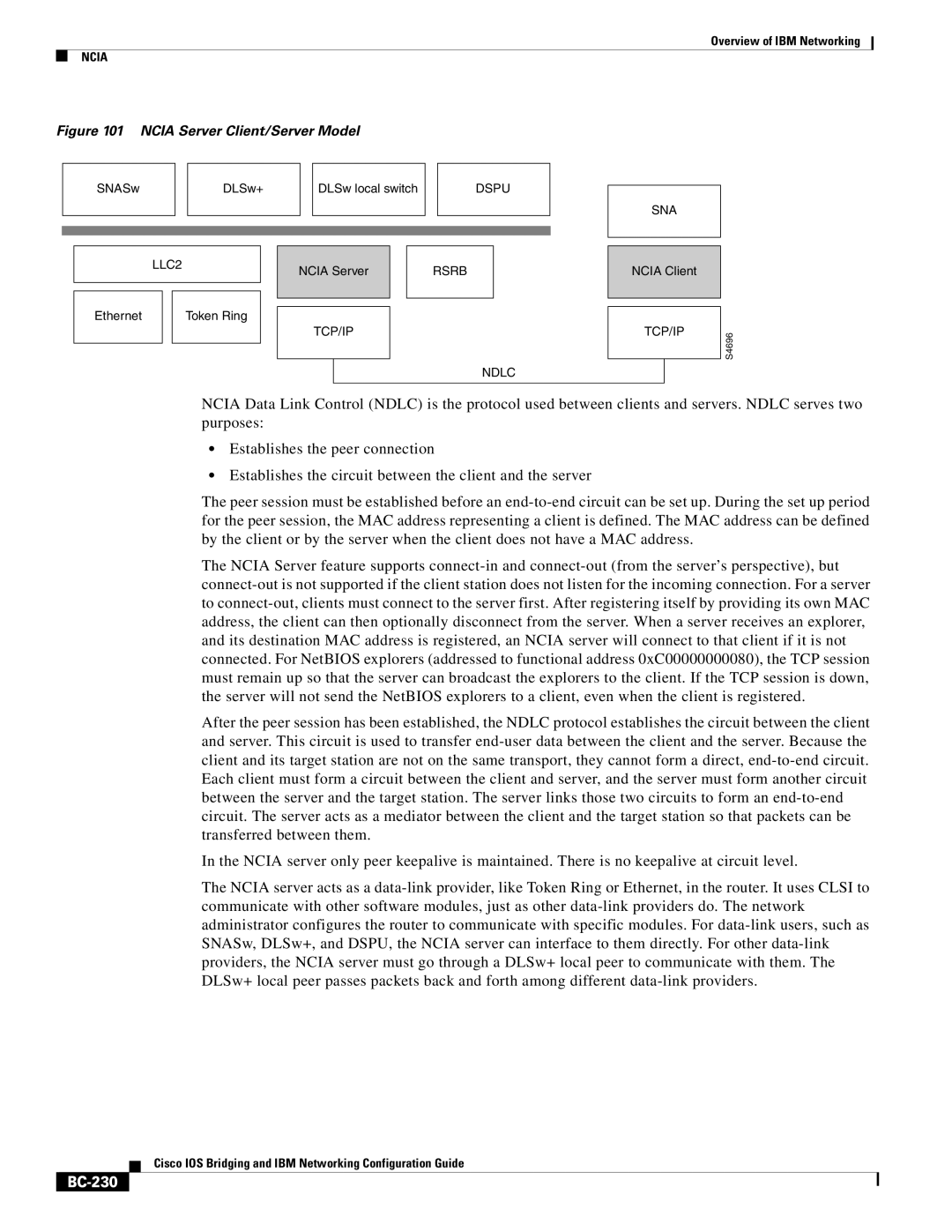NCIA Data Link Control (NDLC) is the protocol used between clients and servers. NDLC serves two purposes:
•Establishes the peer connection
•Establishes the circuit between the client and the server
The peer session must be established before an end-to-end circuit can be set up. During the set up period for the peer session, the MAC address representing a client is defined. The MAC address can be defined by the client or by the server when the client does not have a MAC address.
The NCIA Server feature supports connect-in and connect-out (from the server’s perspective), but connect-out is not supported if the client station does not listen for the incoming connection. For a server to connect-out, clients must connect to the server first. After registering itself by providing its own MAC address, the client can then optionally disconnect from the server. When a server receives an explorer, and its destination MAC address is registered, an NCIA server will connect to that client if it is not connected. For NetBIOS explorers (addressed to functional address 0xC00000000080), the TCP session must remain up so that the server can broadcast the explorers to the client. If the TCP session is down, the server will not send the NetBIOS explorers to a client, even when the client is registered.
After the peer session has been established, the NDLC protocol establishes the circuit between the client and server. This circuit is used to transfer end-user data between the client and the server. Because the client and its target station are not on the same transport, they cannot form a direct, end-to-end circuit. Each client must form a circuit between the client and server, and the server must form another circuit between the server and the target station. The server links those two circuits to form an end-to-end circuit. The server acts as a mediator between the client and the target station so that packets can be transferred between them.
In the NCIA server only peer keepalive is maintained. There is no keepalive at circuit level.
The NCIA server acts as a data-link provider, like Token Ring or Ethernet, in the router. It uses CLSI to communicate with other software modules, just as other data-link providers do. The network administrator configures the router to communicate with specific modules. For data-link users, such as SNASw, DLSw+, and DSPU, the NCIA server can interface to them directly. For other data-link providers, the NCIA server must go through a DLSw+ local peer to communicate with them. The DLSw+ local peer passes packets back and forth among different data-link providers.
Cisco IOS Bridging and IBM Networking Configuration Guide

